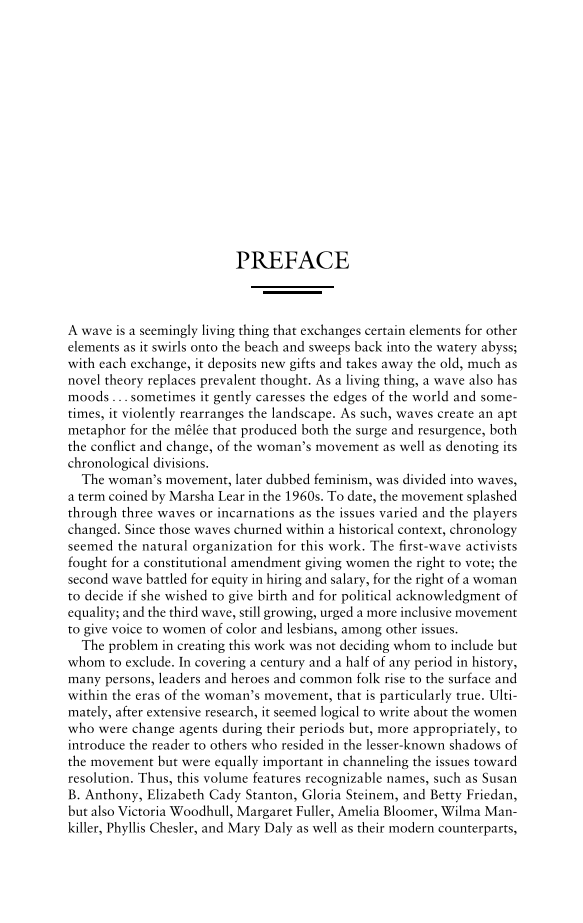PREFACE A wave is a seemingly living thing that exchanges certain elements for other elements as it swirls onto the beach and sweeps back into the watery abyss with each exchange, it deposits new gifts and takes away the old, much as novel theory replaces prevalent thought. As a living thing, a wave also has moods ... sometimes it gently caresses the edges of the world and some- times, it violently rearranges the landscape. As such, waves create an apt metaphor for the melee ˆ ´ that produced both the surge and resurgence, both the conflict and change, of the woman’s movement as well as denoting its chronological divisions. The woman’s movement, later dubbed feminism, was divided into waves, a term coined by Marsha Lear in the 1960s. To date, the movement splashed through three waves or incarnations as the issues varied and the players changed. Since those waves churned within a historical context, chronology seemed the natural organization for this work. The first-wave activists fought for a constitutional amendment giving women the right to vote the second wave battled for equity in hiring and salary, for the right of a woman to decide if she wished to give birth and for political acknowledgment of equality and the third wave, still growing, urged a more inclusive movement to give voice to women of color and lesbians, among other issues. The problem in creating this work was not deciding whom to include but whom to exclude. In covering a century and a half of any period in history, many persons, leaders and heroes and common folk rise to the surface and within the eras of the woman’s movement, that is particularly true. Ulti- mately, after extensive research, it seemed logical to write about the women who were change agents during their periods but, more appropriately, to introduce the reader to others who resided in the lesser-known shadows of the movement but were equally important in channeling the issues toward resolution. Thus, this volume features recognizable names, such as Susan B. Anthony, Elizabeth Cady Stanton, Gloria Steinem, and Betty Friedan, but also Victoria Woodhull, Margaret Fuller, Amelia Bloomer, Wilma Man- killer, Phyllis Chesler, and Mary Daly as well as their modern counterparts,
Document Details My Account Print multiple pages
Print
You have printed 0 times in the last 24 hours.
Your print count will reset on at .
You may print 0 more time(s) before then.
You may print a maximum of 0 pages at a time.






























































































































































































































































